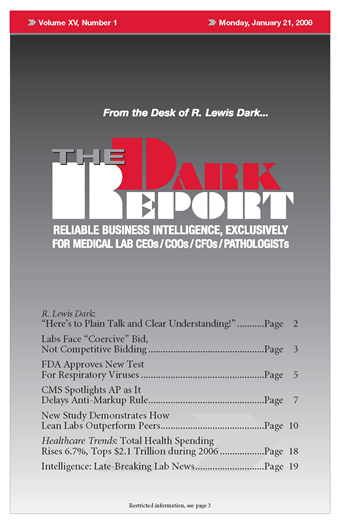CEO SUMMARY: Respiratory viruses are responsible for 75% of all visits to physicians and yet physicians struggle to identify whether an infection is viral or bacterial. Now there is a new molecular assay with FDA clearance that allows physicians to test for 12 common viral infections. It is the xTAG Respiratory Viral Panel (RVP) from …
FDA Approves New Test For Respiratory Viruses Read More »
To access this post, you must purchase The Dark Report.


